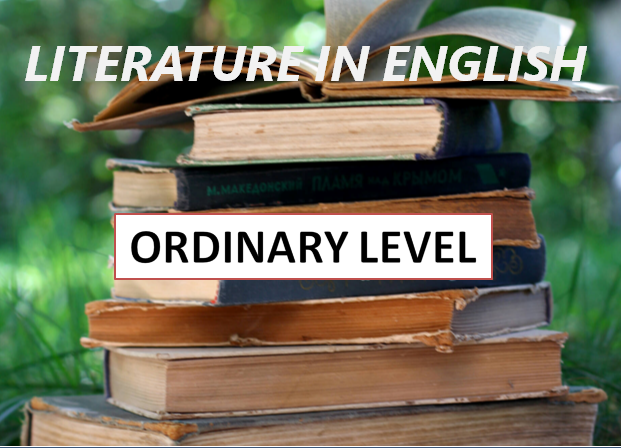107
LITERATURE IN ENGLISH ORDINARY LEVEL Literature in English Ordinary level has three sections; Section A which contains literature plays and …
LITERATURE IN ENGLISH ORDINARY LEVEL
Literature in English Ordinary level has three sections;- Section A which contains literature plays and drama
- Section B which has novels and short stories
- The third section is for poetry
 These are the new set books to be handled
SECTION A
Either
The Return of Mgofu by Francis Imbuga
Or
The Merchant of Venice by William Shakespeare
Either
The Pearl by John Steinbeck
Or
Grief Child by Lawrence Darmani
SECTION B
The Heart Soother by Sylvester Onzivua
Voice of the People by Okiya Omatatah Okoiti
Shadows of Time by Victor Byabamazima
Things Fall Apart by Chinua Achebe
Mema by Daniel Mengara
POETRY
EITHER
Growing Up with Poetry by David Rubadiri
OR
An Anthology of East African Poetry by A. D. Amateshe
These are the new set books to be handled
SECTION A
Either
The Return of Mgofu by Francis Imbuga
Or
The Merchant of Venice by William Shakespeare
Either
The Pearl by John Steinbeck
Or
Grief Child by Lawrence Darmani
SECTION B
The Heart Soother by Sylvester Onzivua
Voice of the People by Okiya Omatatah Okoiti
Shadows of Time by Victor Byabamazima
Things Fall Apart by Chinua Achebe
Mema by Daniel Mengara
POETRY
EITHER
Growing Up with Poetry by David Rubadiri
OR
An Anthology of East African Poetry by A. D. Amateshe

Course Currilcum
-
- LIT/O/1/A: The Lion and the Jewel by Wole Soyinka FREE 03:00:00
- This unit explores the plot, setting, characters and literal devices in Wole Soyinka's Lion and the Jewel
- LIT/O/1/A: THE PEARL by John Steinbeck FREE 02:00:00
- The Pearl is a novella by American author John Steinbeck, first published in 1947. It is the story of Kino, a poor pearl diver, who discovers an enormous and valuable pearl. The novella explores man's nature as well as greed, defiance of societal norms, and evil. Steinbeck's inspiration was a Mexican folk tale from La Paz, Baja California Sur, Mexico, which he had heard in a visit to the formerly pearl-rich region in 1940.[1] In 1947, it was adapted into a Mexican film named La perla and in 1987 into a cult Kannada movie Ondu Muttina Kathe. The story is one of Steinbeck's most popular books and has been widely used in high school classes
- LIT/O/1/A: The Merchant of Venice by William Shakespeare 03:00:00
- The merchant of venice by william shakespeare is one of the major plays in Ordinay level that is set in the Uganda Certificate of Education examinations section A
- LIT/O/1/A: The Government Inspector by Nikolai Gogol 03:00:00
- This Unit summarizes the plot, themes characters in the play The Government Inspector by Nikolai Gogol
- LIT/O/1/A : ROMEO AND JULIET by William Shakespeare Unlimited
- An 1870 oil painting by Ford Madox Brown depicting the play's famous balcony scene "Romeo and Juliet: Act I" MENU0:00 The opening act of Romeo and Juliet. See also: Acts II, III, IV, V Problems playing this file? See media help. Romeo and Juliet is a tragedy written by William Shakespeare early in his career about two young star-crossed lovers whose deaths ultimately reconcile their feuding families. It was among Shakespeare's most popular plays during his lifetime and along with Hamlet, is one of his most frequently performed plays. Today, the title characters are regarded as archetypal young lovers.
- LIT/O/1/A: Taming of the Shrew by William Shakespeare 03:00:00
- The Taming of the Shrew. The Taming of the Shrew is a comic play written by William Shakespeare around 1590 and first published in 1898
- LIT/O/1/A: GRIEF CHILD By Lawrence Darmani 00:00:00
- "Grief Child" is an inspirational story of a young boy incontinent with grief. Whose faith in Christianity helped him in overcoming obstacles after losing all of his family members. A well written novel that won the Commonwealth Writers Prize for best first book Africa in 1992. As most of you already know, count it part of my reading challenge. Please click here for more info. All the same, it was not a novel that I particularly enjoyed. A YA Christian fiction that I would recommend mostly to young people who are going through difficulties and are bereft of hope.
LIT O LEVEL SECTION A: The Lion and the Jewel Assignment 10, 00:00 The merchant of venice by william shakespeare Assignment 10, 00:00 -
- LIT/O/1/B: THINGS FALL APART By Chinua Achebe 00:00:00
- Things Fall Apart is acclaimed as the finest novel written about life in Nigeria at the end of the nineteenth century. Published in 1958, it is unquestionably the world’s most widely read African novel, having sold more than eight million copies in English and been translated into fifty languages. But it offers far more than access to pre-colonial Nigeria and the cataclysmic changes brought about by the British. It also can be a window into the story of the Aborigines in Australia, the Maori of New Zealand, and the First Nations of North, Central, and South America in the “falling apart” of the indigenous cultures of these and other places whose centers could not hold.
- LIT/O/1/B: The African Child By Camara Laye 03:00:00
- The book, originally written in French by Camara Laye under the title “l’enfant noir” in 1954 (the dark child), was translated by James Kirkup. The African Child (published in the US as The Dark Child) is a great read, and is recognized as one of the best novels to come out of French-speaking Africa. The book won the Prix Charles Veillon writing prize.
- LIT/O/1/B: WEEP NOT CHILD BY Ngũgĩ wa Thiong’o 00:00:00
- Weep Not Child, Ngugi wa Thiong’o 1964 novel, centers around the interactions between British colonists in Kenya and the native people. This book takes place during the Mau Mau Uprising, an eight-year struggle in British-controlled colonial Kenya. During this 1950s uprising, the British killed somewhere between 12,000 and 20,000 African rebels. The success of the British Empire can be attributed to their “divide and rule” practice, a political tactic first utilized by the ancient Greeks. This practice makes it difficult or impossible for smaller groups of people to band together and revolt—and that is exactly what happened during the Mau Mau Uprising. Ngugi’s works, including Weep Not Child, are piercingly critical of British rule.
- LIT/O/1/B: The Old Man and the Sea by Ernest Hemingway 00:00:00
- The Old Man and the Sea is a short novel written by the American author Ernest Hemingway in 1951 in Cuba, and published in 1952.It was the last major work of fiction by Hemingway that was published during his lifetime. One of his most famous works, it tells the story of Santiago, an aging Cuban fisherman who struggles with a giant marlin far out in the Gulf Stream off the coast of Cuba.[2] In 1953, The Old Man and the Sea was awarded the Pulitzer Prize for Fiction, and it was cited by the Nobel Committee as contributing to their awarding of the Nobel Prize in Literature to Hemingway in 1954.
- LIT/O/1/B: The River Between by Ngugi Wa Thiongo 00:00:00
- The story tells about the struggle of a young leader, Waiyaki, to unite the two villages of Kameno and Makuyu through sacrifice and pain. The novel is set during the colonial period, when white settlers arrived in Kenya's "White Highlands", and has a mountain setting
- LIT/A/2-LEVEL: A MAN FOR ALL SEASONS by Robert Bolt Unlimited
- The play is set in London, mainly at locations along the Thames, like Thomas More's house, the Tower of London, and Cromwell's office. More lives in Chelsea—now a posh district and former nexus of "Swingin' London" in the '60s. But in the movie it's totally pastoral and bucolic. It's full of lilacs. It's very different from the grim governmental quarters of London, where Cromwell sits around concocting nefarious schemes.
- LIT/O/1: Poetry 00:00:00
- This unit introduces us to Poetry
- LIT/O/1: Introduction to Poetry BY BILLY COLLINS 01:00:00
- Introduction to Poetry BY BILLY COLLINS triggers off a great discussion about how students have interacted with poetry in the past. Sometimes, as teachers, we spend so much time teaching students how to analyze, break down, and decode poetry that we forget to teach them how to appreciate the beauty of the words and the message.
- LIT/O/1: THE ARRIVAL OF THE BEE BOX poem by Sylvia Plath 03:00:00
- Poetry (the term derives from a variant of the Greek term, poiesis, "making") is a form of literature that uses aesthetic and rhythmic[1][2][3] qualities of language—such as phonaesthetics, sound symbolism, and metre—to evoke meanings in addition to, or in place of, the prosaic ostensible meaning
- LIT/O/1: THE SMILING FACE poem 01:00:00
- Poetry (the term derives from a variant of the Greek term, poiesis, "making") is a form of literature that uses aesthetic and rhythmic[1][2][3] qualities of language—such as phonaesthetics, sound symbolism, and metre—to evoke meanings in addition to, or in place of, the prosaic ostensible meaning.
- LIT/0/1: Growing Up with Poetry by David Rubadiri Unlimited
- An anthology designed for the enjoyment and instruction of students from junior-secondary school onwards. The poems focus on aspects central to African life and culture: lover, identity, death, village life, separation, power and freedom. Guidance for teachers is included.
- LIT/O: ELEMENTS OF POETRY 24 hours
- Aspects or elements of poetry can be defined as a set of instruments used to create a poem. There are several features used to make up a good poem.


